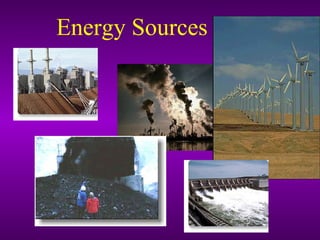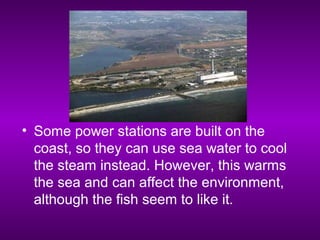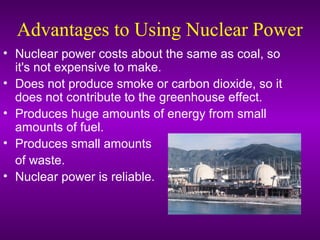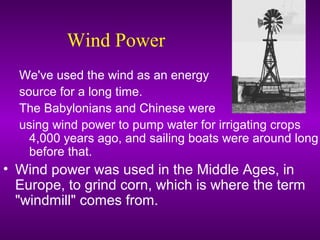Fossil fuels, hydroelectricity, biomass, and geothermal power are energy sources produced in California's Central Valley. Fossil fuels like coal, oil and gas provide the majority of the world's energy but also cause pollution. Hydroelectricity harnesses the power of flowing water through dams. Biomass utilizes waste materials. Geothermal energy taps into the Earth's natural underground heat through wells and reservoirs. The Central Valley climate and geography support production from these various energy sources.











































